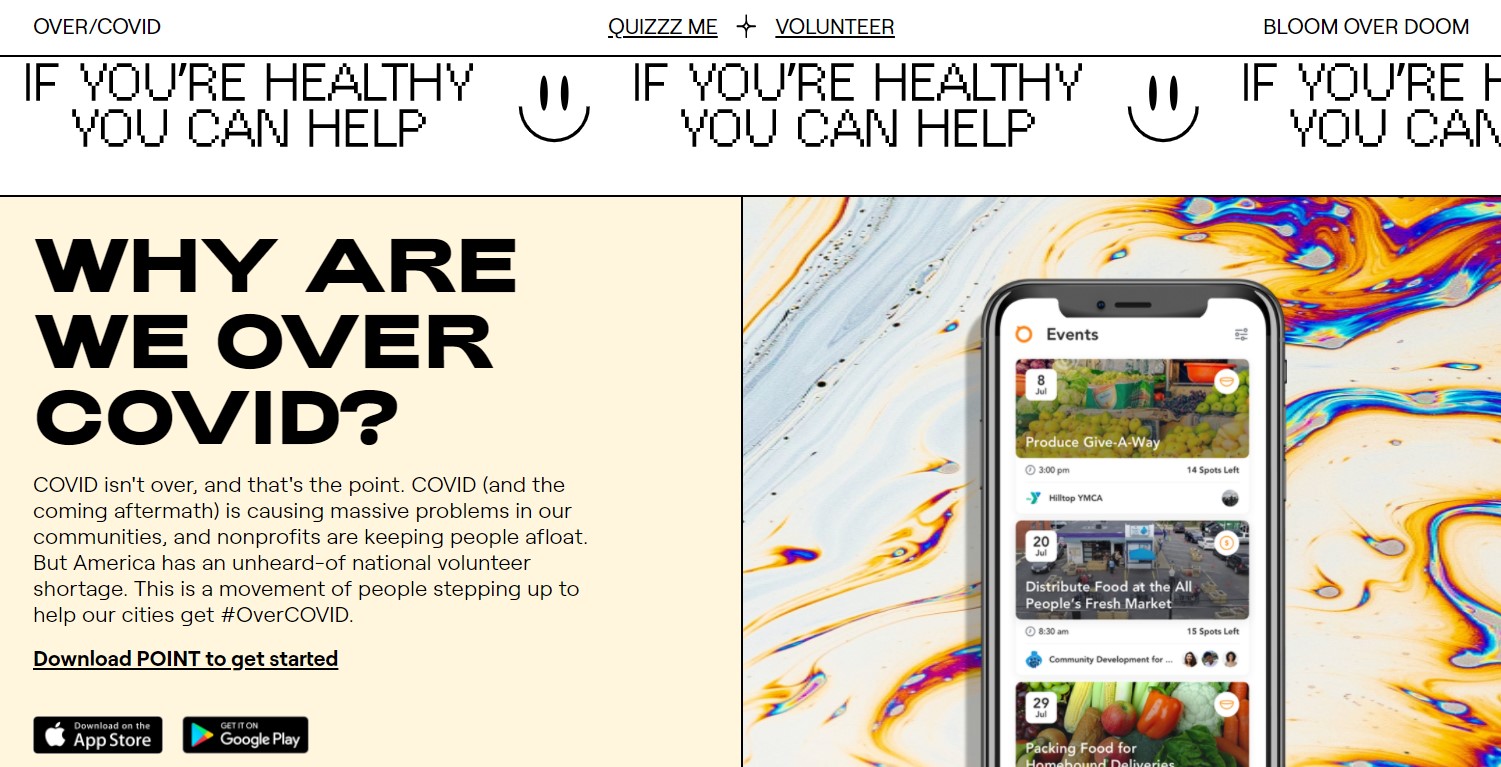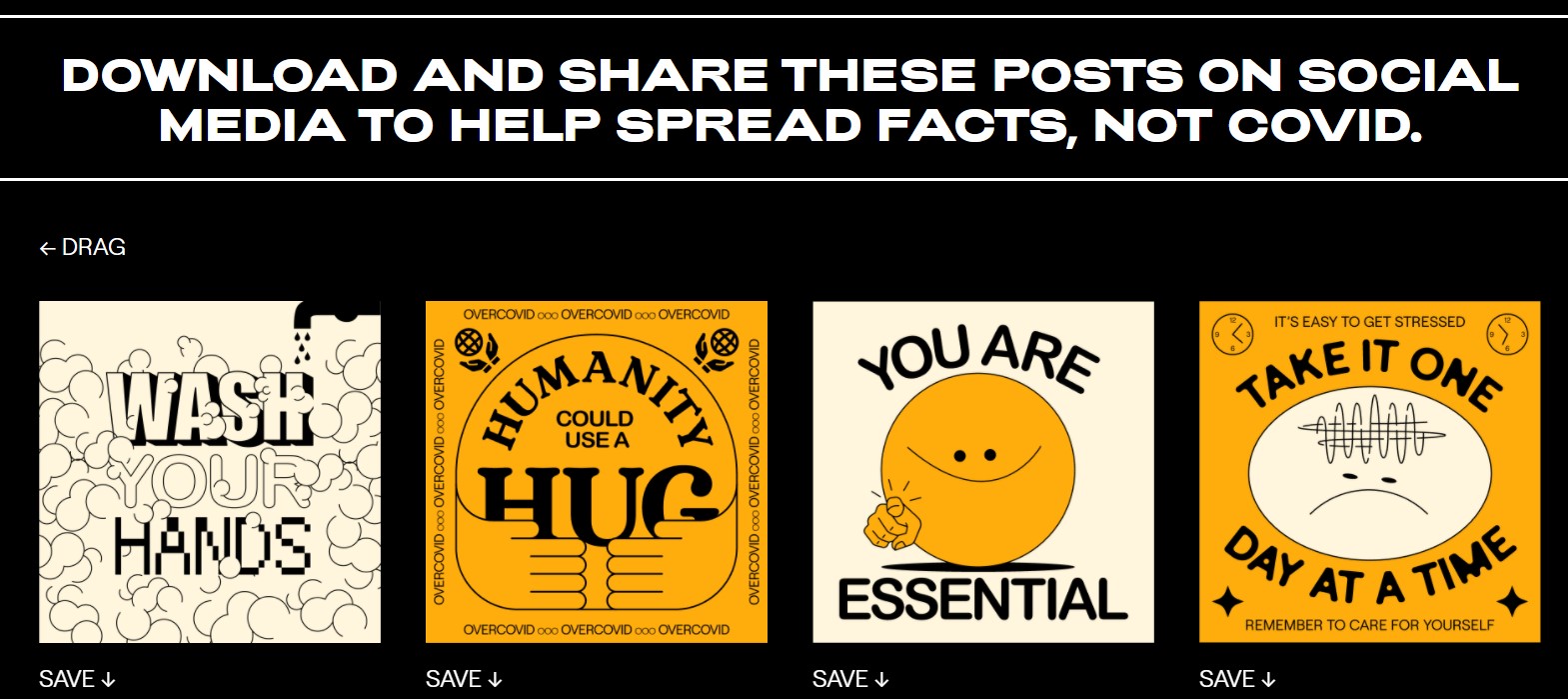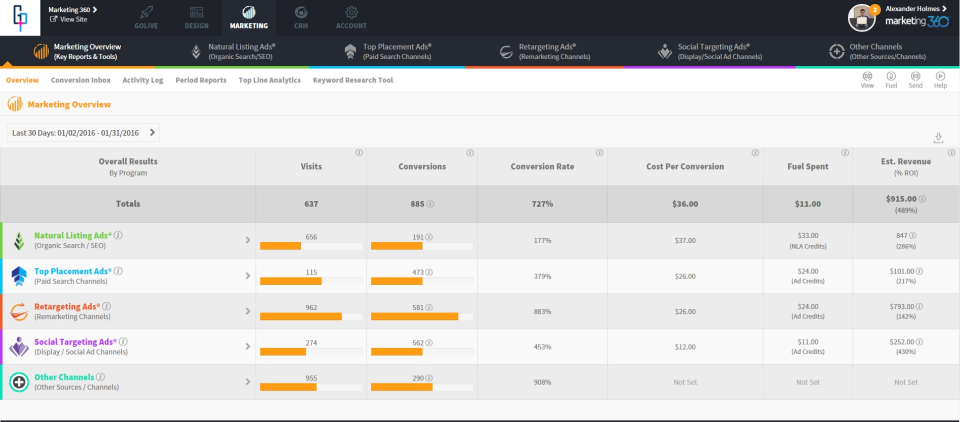Small businesses can connect with their customers in new ways on social media and boost engagement with clear calls-to-action.

More than half of the world’s population uses social media, but how can businesses like yours reach those potential customers? Like most things, a social media campaign requires a solid plan to make the greatest impact.
Social media campaigns can boost engagement, generate leads, and increase brand awareness. And while creating a successful social media campaign can be easier said than done, it can—ultimately—be done.
According to a recent Capterra survey, 98% of manufacturers say digital environments (such as social media) are successful in engaging customers.
But what are the specific steps businesses are taking to harness the potential of social media? To find out, let’s take a look at POINT, a volunteer matching and management app. Founder and CEO Madison Mikhail Bush walked us through a social media campaign they recently launched to connect with an audience that differed from their usual one.
Creating a roadmap for a successful social media campaign
POINT is primarily a business-to-business (B2B) platform but when the pandemic hit, Bush and her team saw a need for a business-to-consumer (B2C) campaign centered on addressing the volunteer shortage nonprofits were experiencing.
“Most food assistance programs in the United States are run by volunteers completely,” Bush said. “Most of those volunteers happened to be older individuals who are at-risk for COVID, so it was really important to recruit younger volunteers."
The #OverCovid social media campaign is POINT’s first B2C campaign and Bush said the planning process was “intense.”
“Moving to a wide audience is really difficult,” Bush said. “We don’t do any large marketing campaigns, and having that learning curve was tough."
POINT used the expertise of agencies to help them plan out their social media campaign strategy, but not every business can or needs to hire outside help. Learn what they did to ensure they were targeting the right people on the right platform so you can do the same for your business.
How to build your own successful social media campaign
1. Know exactly who you’re trying to reach
Before you launch a social media campaign, it’s important to figure out who you’re trying to reach.
Bush said that identifying the audience for the #OverCovid campaign was her team’s first (pretty straightforward) step: Since the pandemic made it unsafe for older volunteers to continue working with nonprofits, they wanted to recruit younger volunteers from Generation Z and millennials.
While you might also be trying to reach people from a certain generation, age isn't the only demographic to consider. Other demographics could include:
Gender
Location
Job title
Education level
Interests
A social media campaign can’t succeed if you don’t know who it is you’re trying to reach, so define your audience early on.
How software can help
Social media marketing software can help you manage your campaigns and gain greater insight into who your audience is by capturing demographics-related data.
2. Research which platforms they prefer
Once you identify who you’re trying to reach, the next step is figuring out where they are. Not everyone uses all social channels or the same platforms in the same ways.
After Bush and her team identified their target audience, they needed to determine which platform would give them the most reach. Since they were primarily targeting Gen Z and millennials, they opted for Instagram and Facebook (where these two groups spend the most time, respectively).
“We targeted specific age groups at a specific location for [the nonprofits] we were trying to support trying to find the right volunteers for them,” Bush said.
While Bush and her team targeted an audience based on age, you might be targeting a different demographic based on gender, education level, or geographic location. Consider who your audience is and where they spend their time online.
The platform you choose will inform how often you should post and the type of content you should make. For example, Twitter users value posts that are short and to the point, not exceeding 280 characters. Instagram users, on the other hand, value more visual elements such as photos and videos.
Since best practices across social media platforms differ, it’s important to know at the beginning of the planning process where the social campaign will be launched.
3. Watch your tone
The tone of your social media campaign ultimately depends on both your target audience and chosen platform.
While a more casual tone might be best on Facebook or Twitter, it might not be appropriate for LinkedIn. Tone goes beyond formality, however, and seeps into emotion. Ask yourself: How do you want your audience to feel after they see your campaign content?
For the #OverCovid campaign, striking the right tone was a priority. The campaign was centered around encouraging young, healthy people to volunteer, but also wanted to avoid shaming people into acting. POINT wanted the campaign to inform potential volunteers.
“Younger individuals, especially Gen Z, don't respond to everything, and for us, it was really important to get the messaging right. The messaging wasn’t something that was guilt-ridden—it was more educational,” Bush said.
Even the name and campaign hashtag, #OverCovid, were chosen carefully for their tone and the message Bush and her team wanted to get across.
“Even though people are over it [COVID-19], the pandemic isn’t over,” Bush said. “And that’s the point. We needed to spread awareness because most people in our community really don’t know the impact of the pandemic on nonprofits.”
POINT's "Welcome to your first pandemic, COVID-19" video on YouTube (Source)
4. Provide a clear call-to-action (CTA)
Now, it's time to ask: What do you want people to do after they see your campaign content?
Perhaps you want them to click a link, share a post, or create their own content to contribute to the campaign. Whatever the case may be, it’s important the viewer knows what to do. Whatever the desired activity, your social media campaign needs to include a clear call-to-action (CTA)
For the #OverCovid campaign, the ultimate goal was to download the POINT app. Once a consumer downloaded the app, they could take a quiz to find out if they met the criteria to volunteer during the pandemic and then match with nonprofits that needed them.
It’s not uncommon for a campaign to include multiple components, but there should only be one CTA highlighted per social media post.
For example, Bush said that while most of the campaign’s videos focused on getting people to download the app, one of the videos focused on encouraging people to take a quiz to determine their eligibility.
Connect each component of your campaign with a specific purpose and clear call-to-action so you don’t overwhelm your audience or freeze them into inaction.
5. Don’t forget about the power of design
You might have the most compelling message in the world, but if it’s not nice to look at, people will scroll right past it onto the next cat video on their feed. A well-designed campaign can also work to guide people through your buyers funnel.
The #OverCovid campaign was set up in this way. For example, viewers may see the campaign’s videos pop up in their social media feeds and go looking for more information. Bush and her team created a landing page for the campaign that—while containing a lot of information—provided a simple user experience catering to their target audience in design, tone, messaging, and flow.
The main CTA was at the very top of the page, encouraging viewers to download the POINT app.

#OverCovid’s landing page with a clear, consistent CTA (Source)
As readers scrolled further, they learned what the campaign is about, why there was a volunteer shortage, and what they could do about it.
The next step was for viewers to take a quiz determining their eligibility to volunteer, followed by more information on which nonprofits were hit the hardest by the pandemic, emphasizing the educational component of the campaign.
The third CTA on the page encouraged viewers to share information about the campaign to expand its reach. For this CTA, the campaign addressed mental health and offered inspirational “buttons” viewers could share on Instagram.

The campaign encouraged users to share content on their own Instagram to increase awareness (Source)
While the campaign included more than one CTA, it prioritized its main goal (downloading the app) by featuring it more prominently on their social media posts and at the top of the landing page.
The landing page's tone is consistent with POINT's social media posts: educational, urgent, and optimistic. And, even more importantly, the landing page itself is easy to navigate, designed with the user in mind, and guides them through the different actions they can take, funneling them through the buyers journey.
How software can help
Landing page software can help you optimize your campaign’s landing page and keep track of metrics such as traffic, unique visitors, and time spent on page.
6. Create your content and schedule posts
At this point, you know who you’re targeting, the tone your content will adopt, on what social media platform your campaign will run, and what you want viewers to do. Now, you’re ready to create the content and schedule it out.
How often you post will depend on the platform. Bush said they tested how many times they needed to get their content in front of people’s faces before they converted. The magic number was 47.
“We really flooded people's feed,” Bush said.
While 47 times was the magic number for the #OverCovid campaign, there is no magic number for all campaigns—you’ll have to test that for yourself and see what works for your target audience.
One way you can do this is through tracking how many views, shares, and clicks each of your posts receive with social media monitoring software. By doing this, you can learn not only how often you should be posting but also the types of content and posts that get the most engagement.
How software can help
Social media management software can help you schedule, publish, update, and track content on social media platforms such as Twitter, Facebook, LinkedIn, and Instagram.
7. Track metrics along the way and pivot as needed
Once your campaign is live, you need to continuously track its progress to see how its performing.
You can match certain metrics with the specific goals of your campaign. Say your goal is engagement, you can measure its success through likes, shares, and comments on applicable platforms. If the goal of your campaign is generating website traffic, you can monitor how much traffic the campaign is funneling (and where it's coming from) by using web analytics software or UTM codes.

The dashboard on Marketing 360 (Source)
For the #OverCovid campaign, POINT decided to measure its success through impressions—how many people saw the campaign content when scrolling through their Instagram or Facebook feeds.
“We wanted [250,000] impressions on our videos for educational awareness to make sure that we are really getting the word out that this was a national issue,” Bush said.
They met their goal, and also kept track of how many people took their quiz (approximately 3,000) as well as how many downloaded the app. Whatever metrics you want to track, software can help you do it.
How software can help
Web analytics software can make tracking metrics and success over time easier.
Social media campaigns can help your business go further
Social media campaigns can help you meet your goals, but they have to be deliberately planned and executed to make the greatest impact.
Depending on your needs, you can hire an agency for help with your social media marketing. Check out our hiring guides for social media marketing agencies and full service digital agencies to determine which one would be a better fit for you.